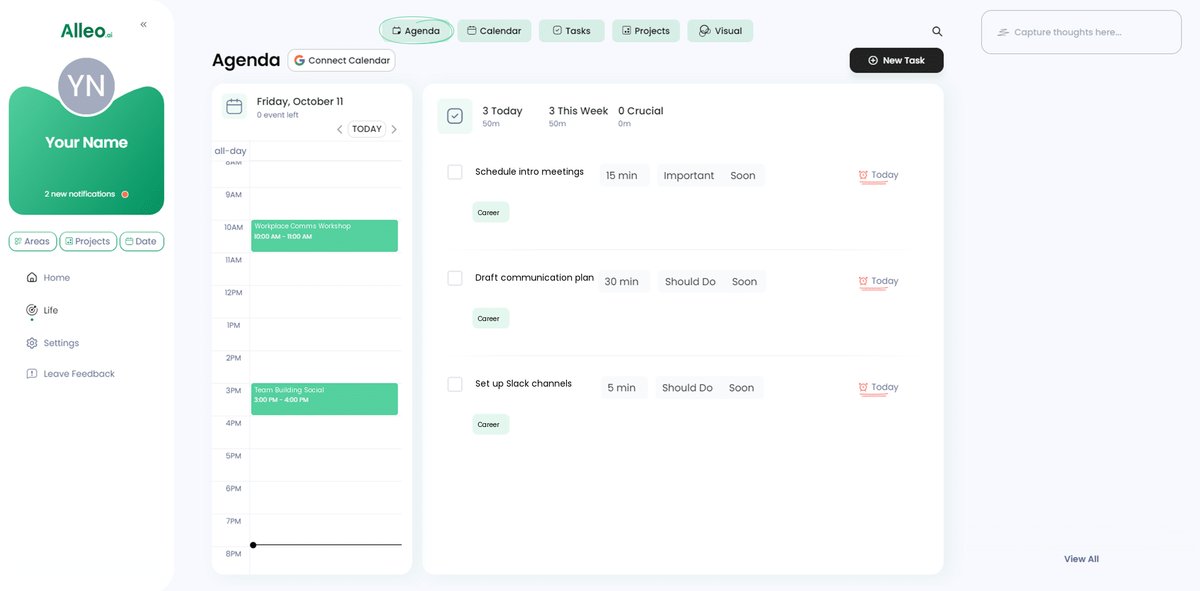7 Proven Strategies for Adapting to New Workplace Relationships
Are you feeling overwhelmed by the challenges of adapting to new workplace dynamics?
As a life coach, I’ve helped many professionals navigate these challenges. I’ve seen firsthand how effective communication and workplace communication skills can make or break this transition.
In this article, you’ll discover strategies to adapt to new workplace relationships. These include establishing open communication channels, practicing active listening, and building professional networks. We’ll explore techniques for navigating office politics and conflict resolution in the workplace.
Let’s dive in.

Understanding the Communication Challenges in New Roles
When adapting to new workplace dynamics, communication hurdles are often the first major challenge. Many clients initially struggle to find the right balance between being assertive and approachable, which is crucial for building professional networks.
Miscommunication can lead to misunderstandings, which disrupt workplace harmony and hinder conflict resolution in the workplace.
In my experience, people often find it tough to gauge the communication styles of their new colleagues and supervisors when navigating office politics. This confusion can result in mixed signals and strained relationships, affecting workplace communication skills.
The impact on productivity and team building techniques can be significant.
Navigating these challenges requires strategic effort and awareness. Making these adjustments early on can save you from more significant issues down the line, improving your emotional intelligence in the office.

Key Strategies to Build Effective Workplace Relationships
Adapting to new workplace dynamics requires a few key steps. Here are the main areas to focus on to make progress in building professional networks:
- Establish open communication channels early on: Schedule introductory meetings and use collaborative tools to enhance workplace communication skills.
- Practice active listening with new colleagues: Engage in one-on-one conversations and reflect on what you’ve heard, improving emotional intelligence in the office.
- Adapt your communication style to new dynamics: Mirror your team’s communication styles and adjust your tone accordingly, essential for navigating office politics.
- Seek feedback on your interactions regularly: Request and implement feedback from supervisors and peers to aid in professional development.
- Participate in team-building activities: Attend and organize team events to build rapport and improve team building techniques.
- Offer assistance to build positive relationships: Volunteer for tasks and share your expertise generously, promoting workplace diversity and inclusion.
- Observe and align with workplace culture norms: Study and integrate the company’s culture into your daily routine, crucial for adapting to new workplace dynamics.
Let’s dive in!
1: Establish open communication channels early on
Setting up open communication channels early can greatly ease your transition into a new role when adapting to new workplace dynamics.
Actionable Steps:
- Schedule introductory meetings with key team members to build professional networks.
- Plan these meetings with clear agendas and objectives to ensure productive discussions and enhance workplace communication skills.
- Use collaborative tools to facilitate ongoing communication and team building techniques.
- Implement tools like Slack or Microsoft Teams for real-time updates and team collaboration, which is crucial for remote work relationship management.
Explanation: Clear communication channels help prevent misunderstandings and foster a collaborative environment, essential for navigating office politics.
Using tools like Slack ensures everyone stays informed and engaged, which is crucial for team productivity and adapting to new workplace dynamics.
For instance, Forbes highlights how collaborative tools improve information flow and team cohesion, essential for new roles and workplace diversity and inclusion.
Starting with open communication sets a positive tone for your new workplace relationships and supports conflict resolution in the workplace.

2: Practice active listening with new colleagues
Practicing active listening with new colleagues is crucial for building trust and understanding when adapting to new workplace dynamics.
Actionable Steps:
- Schedule one-on-one conversations to understand colleagues’ perspectives and improve workplace communication skills.
- Ask open-ended questions to encourage them to share their thoughts and experiences, enhancing your ability to navigate office politics.
- Reflect on what you’ve heard before responding.
- Summarize key points to ensure you’ve understood correctly and show attentiveness, a crucial aspect of emotional intelligence in the office.
Key benefits of active listening include:
- Building stronger relationships with colleagues and professional networks
- Reducing misunderstandings and conflicts, improving conflict resolution in the workplace
- Gaining valuable insights into team dynamics and team building techniques
Explanation: Practicing active listening helps build rapport and avoids misunderstandings when adapting to new workplace dynamics.
When you show genuine interest in your colleagues’ perspectives, it fosters a collaborative work environment and supports workplace diversity and inclusion.
According to Harvard Business Review, active listening is a vital skill for effective team communication, especially in new roles and when managing remote work relationships.
This proactive approach will help you integrate smoothly into your new team and support your mentorship and professional development.

3: Adapt your communication style to new dynamics
Adapting to new workplace dynamics includes adjusting your communication style, which is essential for effective collaboration.
Actionable Steps:
- Observe and mirror the communication styles of your new team.
- Take note of whether they prefer email, face-to-face meetings, or instant messaging for workplace communication skills.
- Adjust your tone and approach based on the context and audience.
- Use formal language in official meetings and a more relaxed tone in casual settings, demonstrating emotional intelligence in the office.
Explanation: Adapting your communication style helps you connect better with colleagues, making interactions smoother and more productive when adapting to new workplace dynamics.
This flexibility shows that you respect and understand their preferred communication methods, aiding in building professional networks.
According to Harvard Business Review, tailoring your communication approach can significantly enhance team dynamics and overall workplace efficiency.
This adaptive approach will help you integrate seamlessly into your new team environment and navigate office politics effectively.

4: Seek feedback on your interactions regularly
Regularly seeking feedback on your interactions is essential for continuous improvement and effective communication when adapting to new workplace dynamics.
Actionable Steps:
- Request feedback from supervisors and peers after key interactions.
- Use feedback forms or informal check-ins to gather specific insights on workplace communication skills.
- Implement changes based on the feedback received.
- Track progress and note improvements in future interactions, focusing on building professional networks.
Explanation: Seeking feedback helps you understand how your communication is perceived and identify areas for improvement in navigating office politics.
This proactive approach can significantly enhance your relationships with colleagues and supervisors, fostering a more collaborative work environment and aiding in adapting to new workplace dynamics.
According to Harvard Business Review, receiving and acting on feedback is crucial for personal and professional growth.
This practice ensures you stay aligned with your team’s expectations and dynamics, contributing to effective conflict resolution in the workplace.

5: Participate in team-building activities
Participating in team-building activities is crucial for fostering strong workplace relationships and adapting to new workplace dynamics in a new role.
Actionable Steps:
- Attend organized team-building events and outings.
- Engage actively and build rapport with team members, enhancing workplace communication skills.
- Suggest and organize informal team gatherings.
- Plan coffee meetups or lunch breaks to foster camaraderie and build professional networks.
Effective team building techniques often include:
- Problem-solving challenges that improve conflict resolution in the workplace
- Shared volunteering experiences promoting workplace diversity and inclusion
- Collaborative creative projects enhancing emotional intelligence in the office
Explanation: Participating in team-building activities helps create a sense of belonging and strengthens team dynamics, crucial for adapting to new workplace dynamics.
According to Entrepreneur, team-building events can significantly boost employee morale and collaboration, which are vital for a smooth transition into a new role and navigating office politics.
These activities will help you integrate seamlessly and build strong connections within your new team, supporting work-life balance strategies and mentorship and professional development opportunities.

6: Offer assistance to build positive relationships
Offering assistance is crucial for building positive relationships when adapting to new workplace dynamics.
Actionable Steps:
- Identify areas where colleagues might need help and offer support.
- Volunteer for collaborative projects or tasks to enhance workplace communication skills.
- Share your expertise and knowledge generously to aid in building professional networks.
- Conduct short training sessions or create helpful resource guides for team building techniques.
Explanation: Offering assistance demonstrates your willingness to contribute and support your team, which fosters trust and collaboration in navigating office politics.
By sharing your expertise, you enhance the team’s overall knowledge and efficiency, promoting workplace diversity and inclusion.
According to Harvard Business Review, establishing trust through helpful actions is essential for positive workplace relationships, especially in new roles.
This proactive approach will help you integrate smoothly into your new team and improve conflict resolution in the workplace.

7: Observe and align with workplace culture norms
Observing and aligning with workplace culture norms is crucial for seamlessly integrating into your new role and adapting to new workplace dynamics.
Actionable Steps:
- Study the company’s culture and values: Review internal documents, attend orientation sessions, and observe daily behaviors to understand workplace diversity and inclusion.
- Integrate cultural norms into your daily routine: Align your work habits and communication style with the established norms, improving your workplace communication skills.
- Seek guidance from long-term employees: Ask experienced colleagues about unwritten rules and expectations, which can help in navigating office politics.
Key aspects of workplace culture to observe include:
- Communication styles and preferred channels for building professional networks
- Decision-making processes and conflict resolution in the workplace
- Work-life balance strategies and expectations
Explanation: Understanding and adapting to new workplace dynamics ensures smoother interactions and better team building techniques.
According to Harvard Business Review, aligning with workplace norms can significantly enhance your productivity and relationships, including in remote work relationship management.
Embracing the culture will help you build strong, positive connections in your new role, fostering mentorship and professional development opportunities.

Partner with Alleo on Your Journey to Adapting to New Workplace Dynamics
We’ve explored the challenges of adapting to new workplace dynamics and the steps to overcome them. Did you know you can work directly with Alleo to make this journey easier and faster?
With Alleo, you get affordable, tailored coaching support to help you enhance your workplace communication skills and navigate office politics effectively in your new role. Start with a free 14-day trial, no credit card needed.
Setting Up Your Account:
- Sign up on the Alleo website.
- Create a personalized plan based on your specific needs and challenges in adapting to new workplace dynamics.
- Start working with your AI coach to overcome communication hurdles and build professional networks.
Working with Your Alleo Coach:
- Receive full coaching sessions like any human coach, focusing on conflict resolution in the workplace.
- Get real-time feedback and advice on your interactions to improve emotional intelligence in the office.
- Stay accountable with text and push notifications for better work-life balance strategies.
Continuous Support:
- Your coach will follow up on your progress in adapting to new workplace dynamics.
- Handle changes and adapt your plan as needed, including remote work relationship management.
- Get tips and reminders to stay on track with team building techniques and workplace diversity and inclusion.
Ready to get started for free? Let me show you how!
Step 1: Log in or Create Your Account
To start your journey with Alleo’s AI coach and improve your workplace relationships, Log in to your account or create a new one to begin your free 14-day trial and access personalized coaching support.

Step 2: Choose Your Focus – Building Better Habits and Routines
Select “Building better habits and routines” from the goal options to address the communication challenges in your new role effectively; this focus will help you establish consistent practices for open communication, active listening, and adapting to workplace culture norms.

Step 3: Select “Career” as Your Focus Area
Choose “Career” as your focus area in Alleo to receive tailored guidance on improving workplace communication and relationships, directly addressing the challenges of adapting to your new role.

Step 4: Starting a Coaching Session
Begin your journey with Alleo by scheduling an intake session, where you’ll discuss your communication challenges in your new role and create a personalized plan to improve your workplace relationships.

Step 5: Viewing and Managing Goals After the Session
After your coaching session, open the Alleo app to find your discussed goals displayed on the home page, allowing you to easily track and manage your progress in adapting to your new workplace relationships.
![]()
Step 6: Adding events to your calendar or app
Track your progress in adapting to new workplace relationships by adding key events and tasks to the Alleo app’s calendar feature, allowing you to stay organized and accountable as you implement communication strategies.

Wrapping Up: Your Path to Successful Workplace Relationships
Adapting to new workplace dynamics can be daunting, but it doesn’t have to be. By focusing on establishing open communication, practicing active listening, and enhancing your workplace communication skills, you’ll build strong professional networks and navigate office politics effectively.
Remember, seeking feedback and participating in team building techniques are key to continuous improvement. Offering assistance and aligning with workplace culture will further enhance your integration, especially when it comes to remote work relationship management and embracing workplace diversity and inclusion.
You can do this. With a strategic approach to adapting to new workplace dynamics, you can transform your challenges into opportunities for mentorship and professional development.
Don’t forget, Alleo is here to support you every step of the way as you navigate workplace dynamics. Try our free 14-day trial to see how we can help you succeed in your new role and maintain work-life balance strategies.